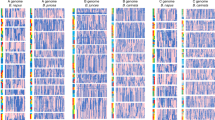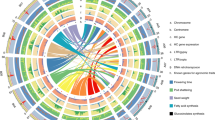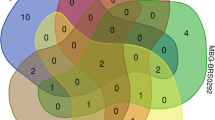Abstract
LAST May we were asked by Messrs. Carter whether there was any danger of intercrossing between kales and swedes. No precise information was available and classification by morphology offered little help for, as Bailey1 remarks, the “Brassica group is indeed perplexing, excepting Rubus the most bewildering I have attempted”. Indeed, in Brassica, we find it less confusing to use the English rather than the Latin names. To add to the confusion the kale concerned, Hungry Gap, was itself reputed to be a cross between widely different types. Therefore, we examined as many types of kale as we could obtain to find whether the chromosome number would throw any light on the situation.
This is a preview of subscription content, access via your institution
Access options
Subscribe to this journal
Receive 51 print issues and online access
$199.00 per year
only $3.90 per issue
Buy this article
- Purchase on SpringerLink
- Instant access to full article PDF
Prices may be subject to local taxes which are calculated during checkout
Similar content being viewed by others
References
Bailey, L. H., Gentes Herbarum, 2, 212 (1940).
Nagai, K., and Sasaoka, T., Jap. J. Genet., 5, 151 (1930).
Howard, H. W., J. Genet., 35, 383 (1938).
Catcheside, D. G., Ann. Bot., 48, 601 (1934).
Author information
Authors and Affiliations
Rights and permissions
About this article
Cite this article
THOMAS, P., CRANE, M. Genetic Classification of Brassica Crops. Nature 150, 431 (1942). https://doi.org/10.1038/150431a0
Issue date:
DOI: https://doi.org/10.1038/150431a0
This article is cited by
-
Morphologisch-taxonomische Gliederung der Kultursippen vonBrassica oleracea L.
Die Kulturpflanze (1963)



